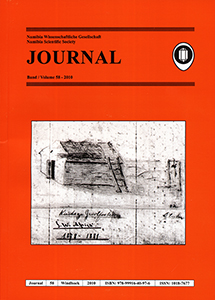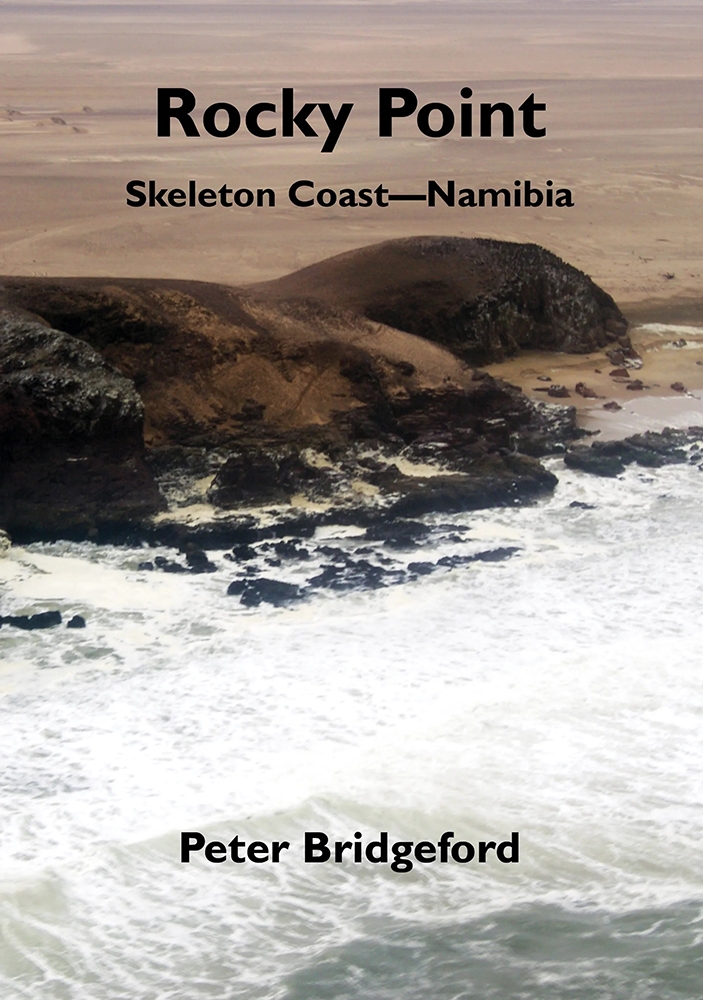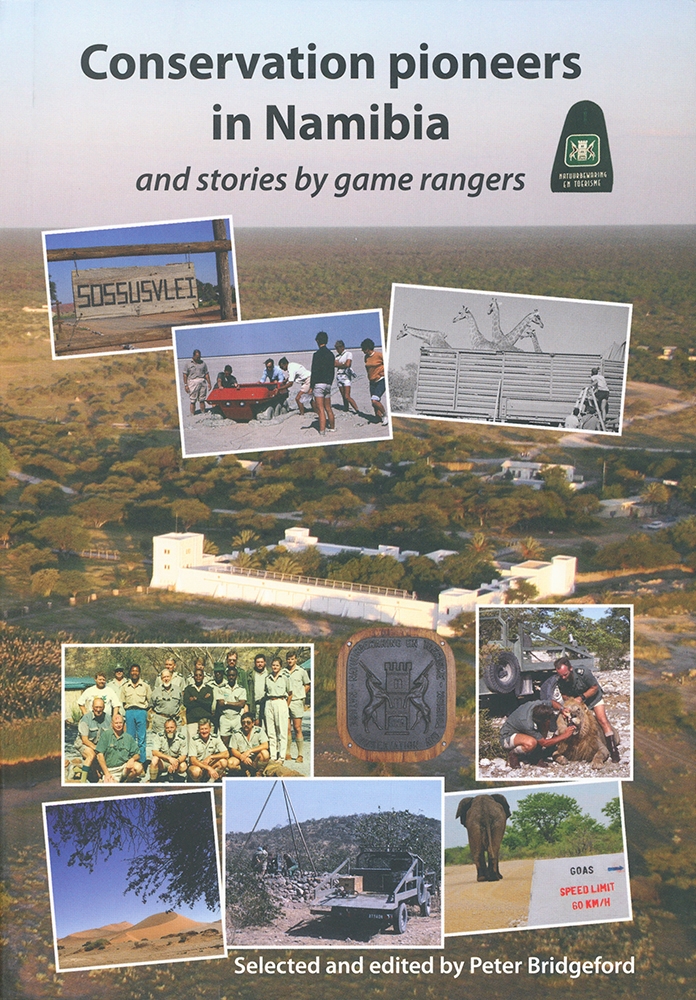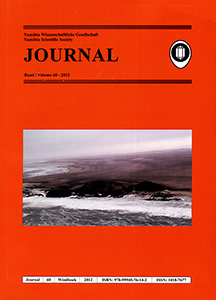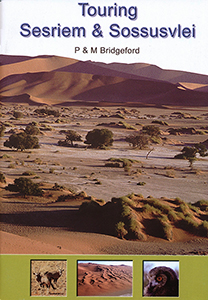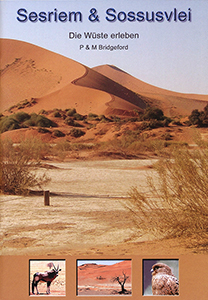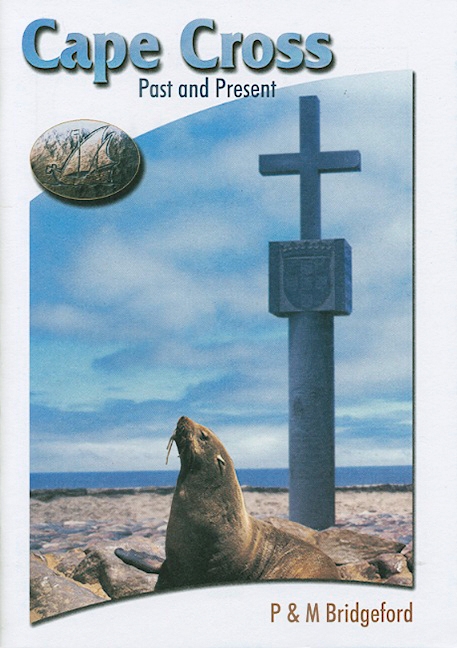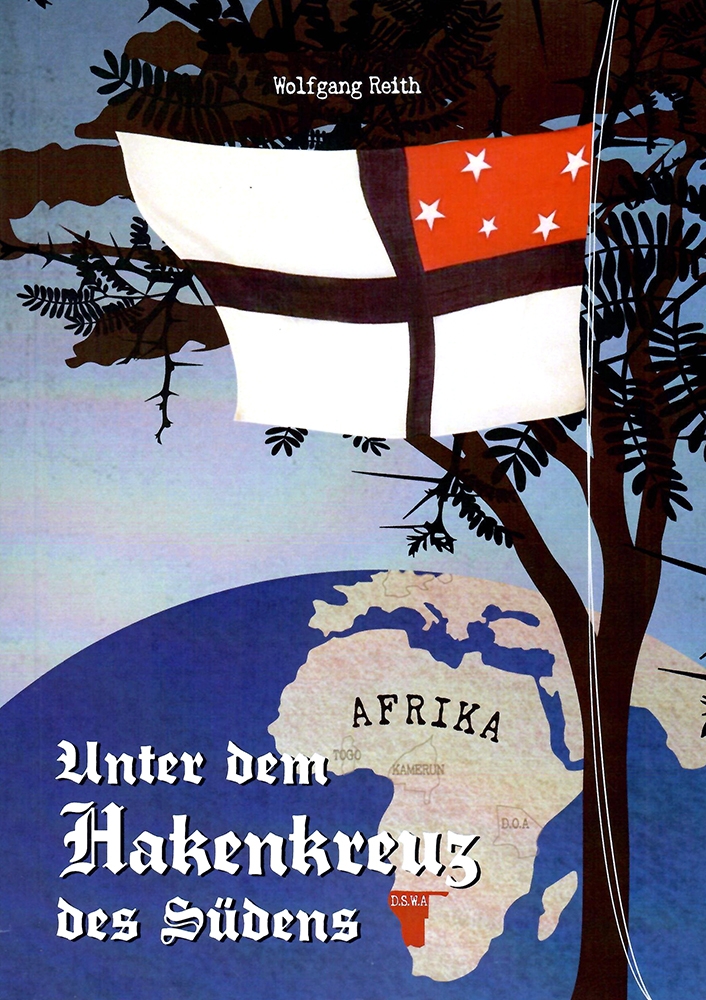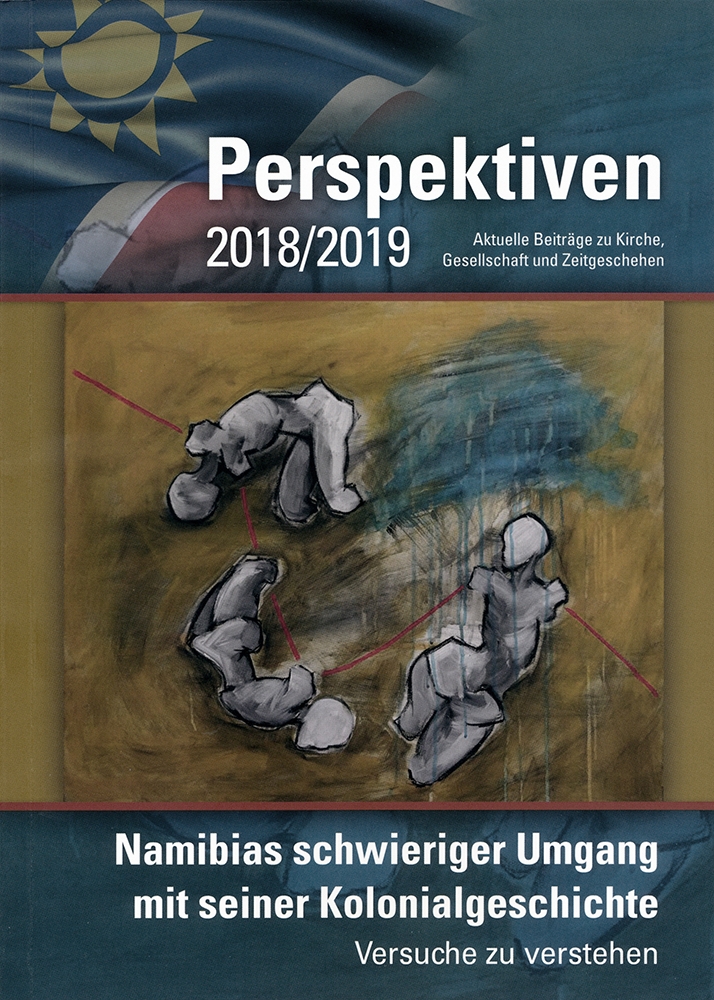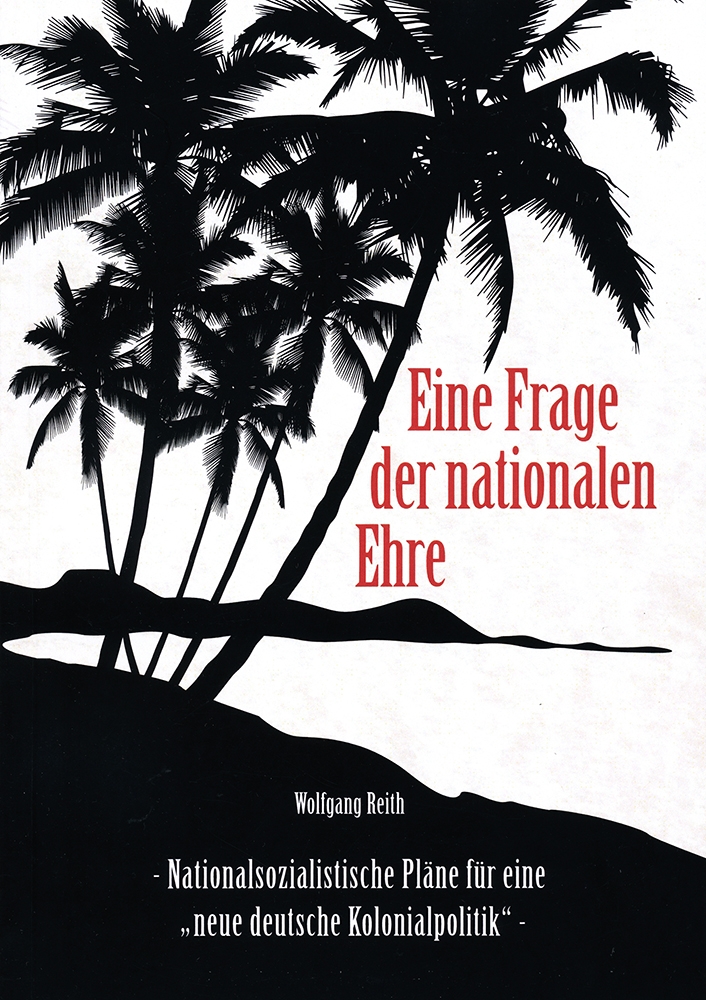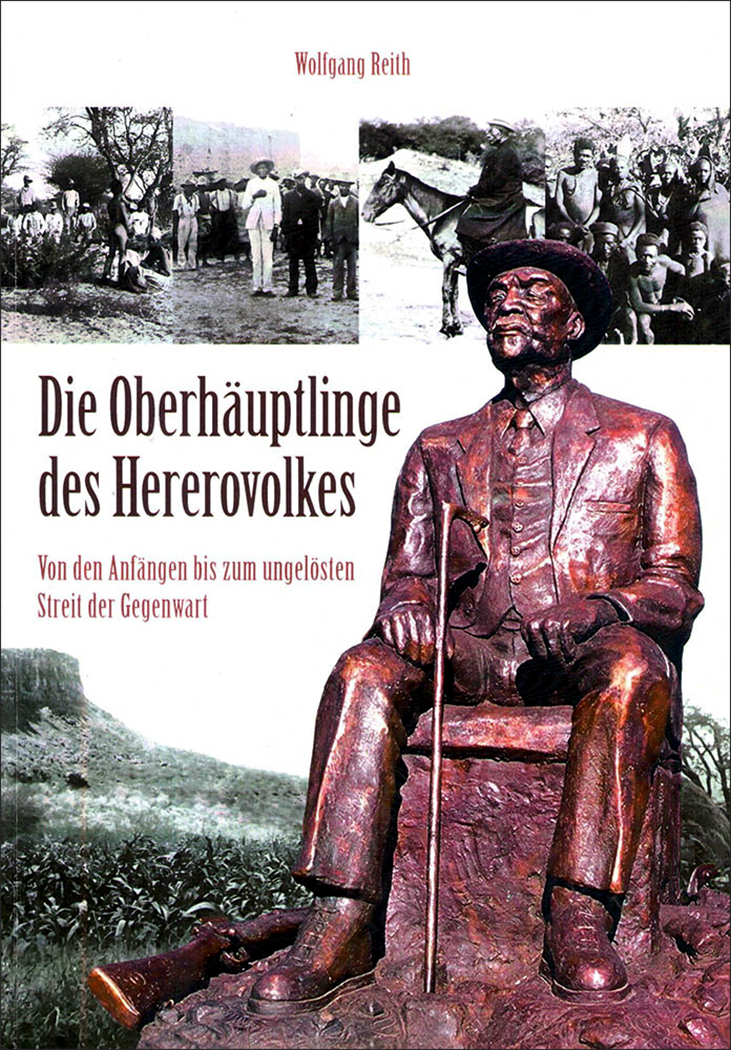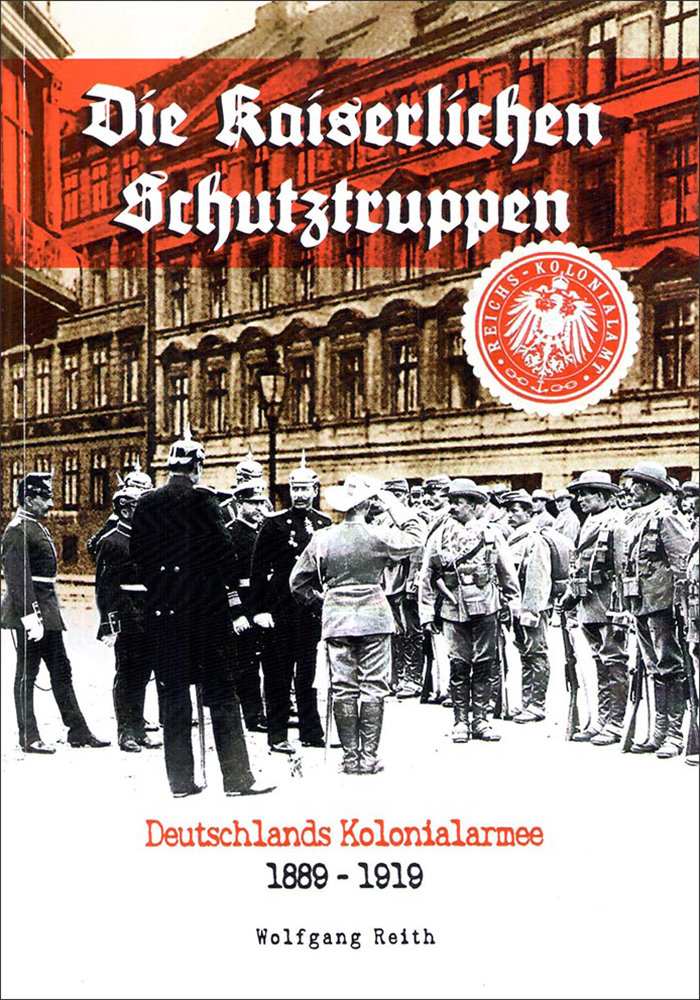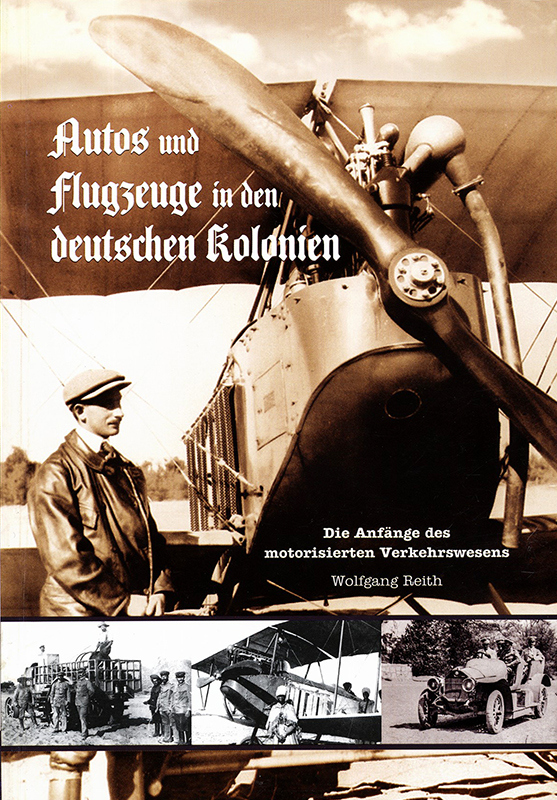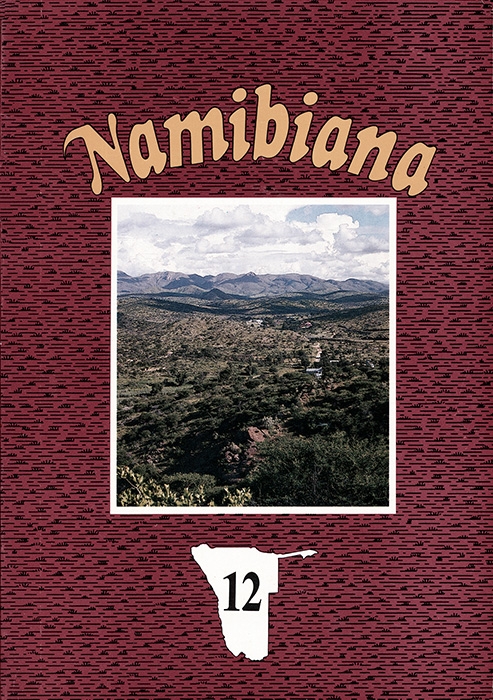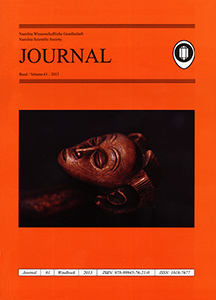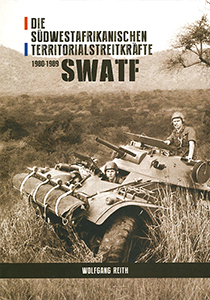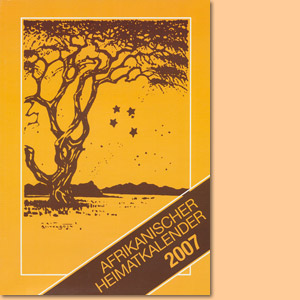Journal 58-2010 (Namibia Scientific Society), by Peter & Marilyn Bridgeford et al.
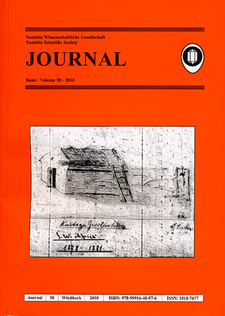
Journal 58-2010 (Namibia Scientific Society), by Peter & Marilyn Bridgeford et al. Windhoek, Namibia 2010, ISBN 9789991640976 / ISBN 978-99916-40-97-6
Peter & Marilyn Bridgeford's topic in the 58th volume (2010) of the Namibia Scientific Society's Journal is about the first settlers in the former Maltahöhe district.
Peter Bridgeford Wolfgang Reith
First settlers in the Maltahöhe district (Peter & Marilyn Bridgeford)
The first "foreigner" to live for some time in what was later to become the Maltahöhe District, was the Reverent James Archbell, a missionary of the Wesleyan Mission Society. Born in Yorkshire, England in 1798, the young man arrived in 1821 and settled at Bosfontein, about 30 km south of the present day Maltahöhe. This place was chosen because of its strong fountain. The name Bosfontein was later changed to Grootfontein Süd (Big Fountain South). The currently registered farm name is Lisbon. However, it appears that the local Nama captain did not agree with Archbell's missionary work in the area, so Archbell left in 1822. He went to Lüderitzbucht, from where he managed to find a ship sailing to Cape Town. Archbell died in Pietermaritzburg, Natal in 1866. In 1868, some of the Baster community living at De Tuin and Pella in the Cape Colony crossed the Orange River. Over the years, more Basters followed, all hoping to find a peaceful place to live, but this was not to be. Although most of them settled in the Rehoboth area, a group led by Captain Klaas Zwart established themselves at Grootfontein Süd in 1873. They had the written permission of Captain David Christiaan. This was the same place where Rev. James Archbell had lived for a short time 50 years before. On Sunday 27 April 1878, the Rhenish missionaries Hermann Kreft and Heinrich Pabst arrived at Grootfontein Süd. The Baster community jubilantly welcomed them. Kreft was ill on arrival and died a few days later. The community built Pabst a small church and a clay-brick house measuring 10m x 4.5m, with whitewashed internal walls. Pabst, born on 12 June 1849 in Biebernheim, Germany, was a shoemaker by trade. He joined the Rhenish missionary school, was ordained in 1877 and sent to Great Namaqualand, as the area north of the Orange River was known. Due to the warring factions in the territory vying for power and control, the community at Grootfontein Süd was continually harassed and their stock plundered. Bushmen, some with firearms, shot Nama herders and Basters alike. The settlers suspected some Namas were behind the unrest and Baster appeals to Captain David Christiaan to investigate the problems, were ignored. During 1880, three families returned to the Cape Colony while three more moved to Rehoboth. The brackish soil produced poor crops and because of the many people at Grootfontein Süd, 190 Basters and 60 Namas, the fountains were over-utilised. In addition, drought and wild animals took their toll on the stock. Pabst wrote that during a drought in January 1880, a trip from Grootfontein Süd to Lüderitzbucht by ox-wagon took 20 days. He lost 15 oxen on this trip, as food and water were in short supply. The journey was undertaken to meet his bride, Agnes Luise Johanne Neumann. The couple were married in Bethanien on 17 February 1880. In 1881, after losing over 1 000 small stock and 80 oxen, and due to the worrying deaths of many Basters and their Nama herders in the district, the majority of the Baster community left Grootfontein Süd. Pabst moved south and after spending some time in Berseba and Keetmanshoop, he took over the mission in Warmbad, just north of the Orange River, in 1883. In May 1885, he left again and moved to Rietfontein, due east of Keetmanshoop, just across the border in the northern Cape Colony. Pabst lived there for many years until his return to Germany in 1913 where he died four years later. However, his and his family's connection with the future district of Maltahöhe was by no means over. Antonie Pabst, the oldest of the Pabst children, was born at the mission in Rietfontein on 16 January 1881. She was sent to Germany for her schooling, as were all her siblings, but Antonie Pabst was the only one to return to Africa. In about 1902, she joined her widowed father in Rietfontein. The next person to enter the scene, George Bainbridge Albertyn, was born on 3 June 1879 in Cape Town. He moved to the German colony of Deutsch-Südwestafrika (DSWA) (German South West Africa), at the end of the second Anglo-Boer War in 1902. After the bloody and bitter war, he no longer wanted to live in the British controlled Cape Colony. [...]
This is an excerpt from the Journal 58-2010 (Namibia Scientific Society), by Peter & Marilyn Bridgeford et al.
Title: Journal 58-2010
Series: Journal, Volume 58
Authors: as listed below
Genre: Scientific Journal
Publisher: Namibia Scientific Society
Windhoek, Namibia 2010
ISSN 1018-7677
ISBN 9789991640976 / ISBN 978-99916-40-97-6
Softcover, 17 x 24 cm, 80 pages, numerous b/w photographs, texts in English and German
Reith, Wolfgang und Bridgeford, Peter und Bridgeford, Marilyn und Smolarski, Rene und Graz, F. Patrick im Namibiana-Buchangebot
Journal 58-2010 (Namibia Scientific Society)
A scientific series published by the Namibia Scientific Society, this is the Journal Nr. 58 from 2010.
Rocky Point. Skeleton Coast - Namibia
The history of Rocky Point, a small, isolated rock outcrop on the Skeleton Coast of Namibia.
Conservation Pioneers in Namibia
Conservation Pioneers in Namibia and stories by game rangers: a compelling and insightful read.
Journal 60-2012 (Namibia Wissenschaftliche Gesellschaft / Namibia Scientific Society)
Dies ist Band 60 des Journals der Namibia Wissenschaftliche Gesellschaft (Namibia Scientific Society), der 2012 herausgegeben wurde und bereits vergriffen ist.
Touring Sesriem and Sossusvlei
A guide to plants and animals of the Namib area of Sesriem and Sossusvlei, its history, geology, ecology and touring routes.
Sesriem und Sossusvlei. Die Wüste erleben
Ein landeskundlicher Blick auf die Geschichte, Geologie und Ökologie der Wüste Namib im Bereich von Sesriem und Sossusvlei.
Cape Cross. Past and present
The fascinating past and present of Cape Cross in Namibia over the past 500 years.
Unter dem Hakenkreuz des Südens: Der Nationalsozialismus in Südwestafrika
Unter dem Hakenkreuz des Südens: Daten, Fakten und Zeitzeugenbeiträge zum Nationalsozialismus in Südwestafrika.
Perspektiven 2018/2019: Namibias schwieriger Umgang mit seiner Kolonialgeschichte
Als Nachfolger des Afrikanischen Heimatkalenders bringt Perspektiven 2018-2019 als Doppeljahrgang aktuelle Beiträge zu Kirche, Gesellschaft und Zeitgeschehen in Namibia: Namibias schwieriger Umgang mit seiner Geschichte.
Eine Frage der nationalen Ehre: Nationalsozialistische Pläne für eine „neue deutsche Kolonialpolitik“
Die NSDAP und Kolonien, ursächlich eine Frage der nationalen Ehre: Nationalsozialistische Pläne für eine „neue deutsche Kolonialpolitik“.
Die Oberhäuptlinge des Hererovolkes
Die Oberhäuptlinge des Hererovolkes in Namibia: Von den Anfängen der Hererokultur bis zum Machtkampf der Gegenwart.
Die Kaiserlichen Schutztruppen
Die Kaiserlichen Schutztruppen: Die Geschichte der Kolonialarmee des Deutschen Reiches von 1889 bis 1919.
Autos und Flugzeuge in den deutschen Kolonien
'Autos und Flugzeuge in den deutschen Kolonien' beschreibt die Anfänge der Motorisierung, der Automobilisierung und Luftfahrt in den deutschen Schutz- und Pachtgebieten.
Namibiana Nr. 12 (1993)
Dies ist Nr. 12 der Reihe Namibiana aus 1993, einer Zeitschrift der Ethnologisch-Historischen Arbeitsgruppe der Namibia Wissenschaftlichen Gesellschaft.
Journal 61-2013 (Namibia Wissenschaftliche Gesellschaft / Namibia Scientific Society)
Dies ist Band 61 des Journals der Namibia Wissenschaftliche Gesellschaft (Namibia Scientific Society), der 2013 herausgegeben wurde. Die Hauptbeiträge dieser Ausgabe sind in deutscher Sprache gehalten.
Journal 63-2015 (Namibia Scientific Society)
A scientific series published by the Namibia Scientific Society, this is the Journal Nr. 63 from 2015.
Die südwestafrikanischen Territorialstreitkräfte (SWATF) 1980-1989
Erstmals in Deutsch beschrieben: Die Geschichte der südwestafrikanischen Territorialstreitkräfte (SWATF) von der Gründung 1980 bis zur Auflösung 1989.
Afrikanischer Heimatkalender 2007
Afrikanischer Heimatkalender 2007: Seit 1930 Botschafter christlicher Werte in Namibia, mit vielen interessanten landeskundlichen, geschichtlichen, politischen und kulturellen Beiträgen.

